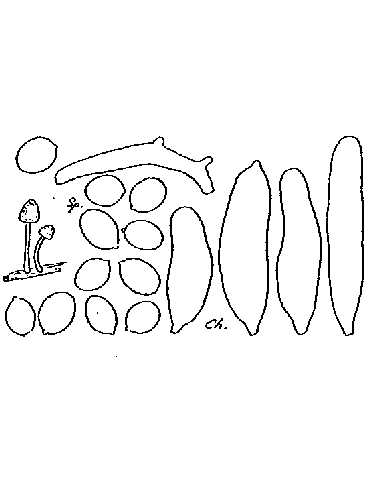Macroscopic features |
Pileus 2-4 x 2-3 mm when still closed, up to 8 mm when expanded, first globose, subglobose, ovoid or conical, beige. Veil beige, breaking up in small, woolly-hairy scales, becoming whitish when expanding; the beige colour staying at centre of pileus for a rather long time. Lamellae rather crowded, free, first white, then grey to blackish. Stipe up to 20 x 0.5-1 mm, white, greyish white, somewhat floccose above clavate base. |
Microscopic features |
Spores [20,1,1] 4.0-5.6 x 3.3-4.1 µm, ellipsoid or ovoid with rounded apex, rather pale (grey-)brown and central, c. 1 µm wide germ pore; Q = 1.20-1.40, av. Q = 1.30; av. L = 4.9, av. B = 3.7 µm. Basidia 10-24 x 6-8 µm, 4-spored, surrounded by 3-6 pseudoparaphyses. Pleurocystidia 30-70 x 10-14 µm, (sub)cylindrical or slightly utriform. Cheilocystidia 30-60 x 10-15 µm, similar to pleurocystidia. Elements of veil thin-walled, diverticulate, 2-8 µm wide; walls slightly incrusted. Clamp-connections absent. |
Habitat & distribution |
On grasses. Probably not rare but overlooked. |
Remarks |
This species differs from Coprinus urticicola to which it is closely related, by having distinctly smaller spores and beige coloured basidiocarps. |

[Copyright © by Uljé]